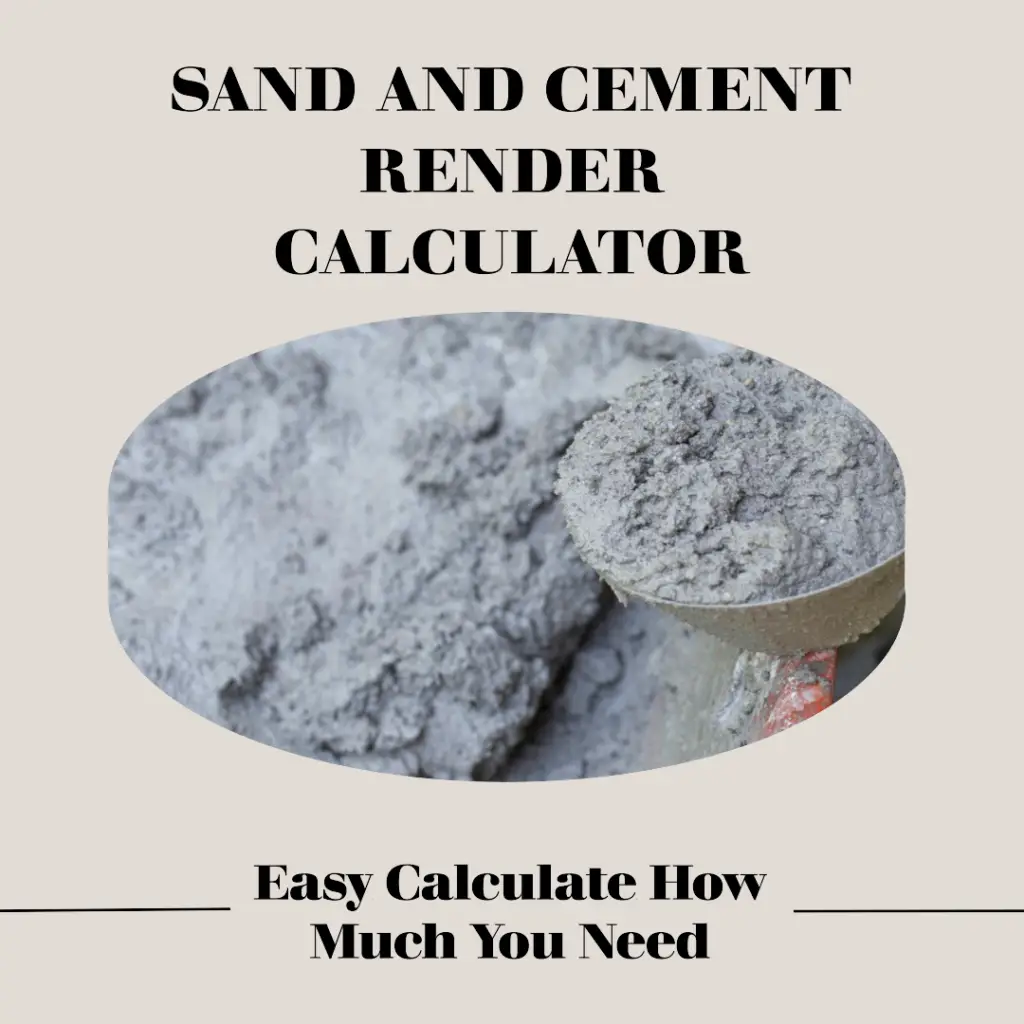This Sand and Cement Render Calculator quickly estimates the required amount of sand and cement bags needed for your rendering project based on the wall area in square meters.
Applying a sand and cement render is an excellent way to create a durable, weather-resistant finish for the exterior walls of a building. It helps protect the brick or blockwork, provides an even surface for painting, and enhances the overall appearance of the property.
Calculate Your Render Materials
Sand and Cement Render Calculator
Render Materials:
Sand Needed: kg
Cement Needed: kg
25kg Bags of Sand:
25kg Bags of Cement:
How Does Sand and Cement Rendering Work?
Sand and cement rendering involves mixing sand, cement, and water to create a mortar.
This mixture is then applied to the exterior walls of a building in one or more layers, depending on the desired thickness and finish.
The render is typically applied using a trowel and may be finished with a variety of textures, such as smooth, rough, or patterned.
Simply input the wall area in square meters, and the calculator will provide the required amount of sand and cement in bags.
The proportion of sand and cement in the mixture is crucial for achieving the desired strength and durability.
A common ratio for sand and cement render is 4 parts sand to 1 part cement, although this can be adjusted based on factors such as the type of sand, the wall surface, and local weather conditions.
Our Cement Render Calculator will help you estimate the amount of sand and cement needed for your rendering project, if you need to work out how much K Render you need we have a K Rend Calculator.
To work out the cost of rendering use our Rendering Cost Calculator UK
FAQs
What Sand Should Be Used For Render?
The type of sand used for rendering plays a crucial role in the quality and durability of the final result. The best sand for rendering is usually a well-graded, clean, and sharp sand. The most common types of sand used for rendering are:
- Washed sharp sand: Washed sharp sand has angular and gritty particles that help create a strong bond with the cement. It is free from impurities like clay, silt, and organic matter, ensuring a consistent and durable render.
- Plastering sand (also known as building sand or soft sand): This type of sand has a finer texture than sharp sand and is often used for rendering projects that require a smoother finish. It is still important to ensure that the sand is clean and free from impurities to achieve a strong bond with the cement.
- Silica sand: Silica sand is a high-quality sand with a consistent particle size, making it suitable for rendering projects that require a particularly smooth and even finish. It is more expensive than other types of sand, so it is often reserved for special projects or used in combination with other sands.
When choosing sand for rendering, it is important to consider factors such as the desired finish, the type of cement being used, and the specific requirements of the project. In some cases, a blend of different sands may be used to achieve the optimal balance of strength, workability, and aesthetics. Always consult with a professional or follow the recommendations provided by the manufacturer of the cement being used.
What is the purpose of a sand and cement render?
Sand and cement render serves as a protective layer for exterior walls, providing a durable, weather-resistant finish that can enhance the building’s appearance and prolong the life of the brick or blockwork.
What is the recommended ratio of sand to cement in a render mixture?
A common ratio for sand and cement render is 4 parts sand to 1 part cement. However, this mix ratio can be adjusted based on factors such as the type of sand, the wall surface, and local weather conditions.
Can I apply sand and cement render on any type of wall?
A: Sand and cement render can be applied to most types of masonry walls, such as brick, concrete block, and stone. It is important to ensure the wall is clean, free of dust, and structurally sound before applying the render.
How thick should the sand and cement render be?
The thickness of sand and cement render typically ranges from 6mm to 25mm, depending on the desired finish and the condition of the underlying wall. It is common to apply multiple layers of render to achieve the required thickness and finish.
How long does it take for sand and cement render to dry?
The drying time for sand and cement render can vary depending on factors such as temperature, humidity, and the thickness of the applied layers. In general, it takes around 24-48 hours for each layer of render to dry before the next layer can be applied. It is important to allow the render to dry completely before painting or applying any finishing treatments.
What is the best mix for sand and cement rendering?
The majority of rendering mixtures consist of sand, water, cement, and lime. A commonly employed ratio for crafting this mixture stands at 6 parts sand, 1 part cement, and 1 part lime (6:1:1).
How much sand and cement per m2 for rendering?
Conclusion
Sand and cement render is a versatile and durable solution for protecting and enhancing the exterior walls of a building.
The choice of sand, cement ratio, and rendering techniques can significantly impact the final result.
It is essential to choose the right type of sand, such as washed sharp sand, plastering sand, or silica sand, depending on the desired finish and project requirements.
By using our Sand and Cement Render Calculator, you can quickly estimate the required amount of sand and cement for your rendering project, making the planning process more efficient.
With proper preparation, application, and drying, a well-executed sand and cement render can significantly improve the appearance and longevity of your property.
Author Profile

- I have many qualifications and certificates in construction, such as City & Guilds, CPCS and CITB. These are the highest standards of training and competence in the industry. Whether you need help with plumbing, carpentry, bricklaying or any other trade, I’m here to help you succeed.
Latest entries
- March 6, 2024CalculatorsWall Tile Calculator: How Many Wall Tiles Do You Need
- February 29, 2024Roof Truss Cost Calculator
- December 31, 2023Wage Take Home Calculator
- December 30, 2023Day Rate Calculator

